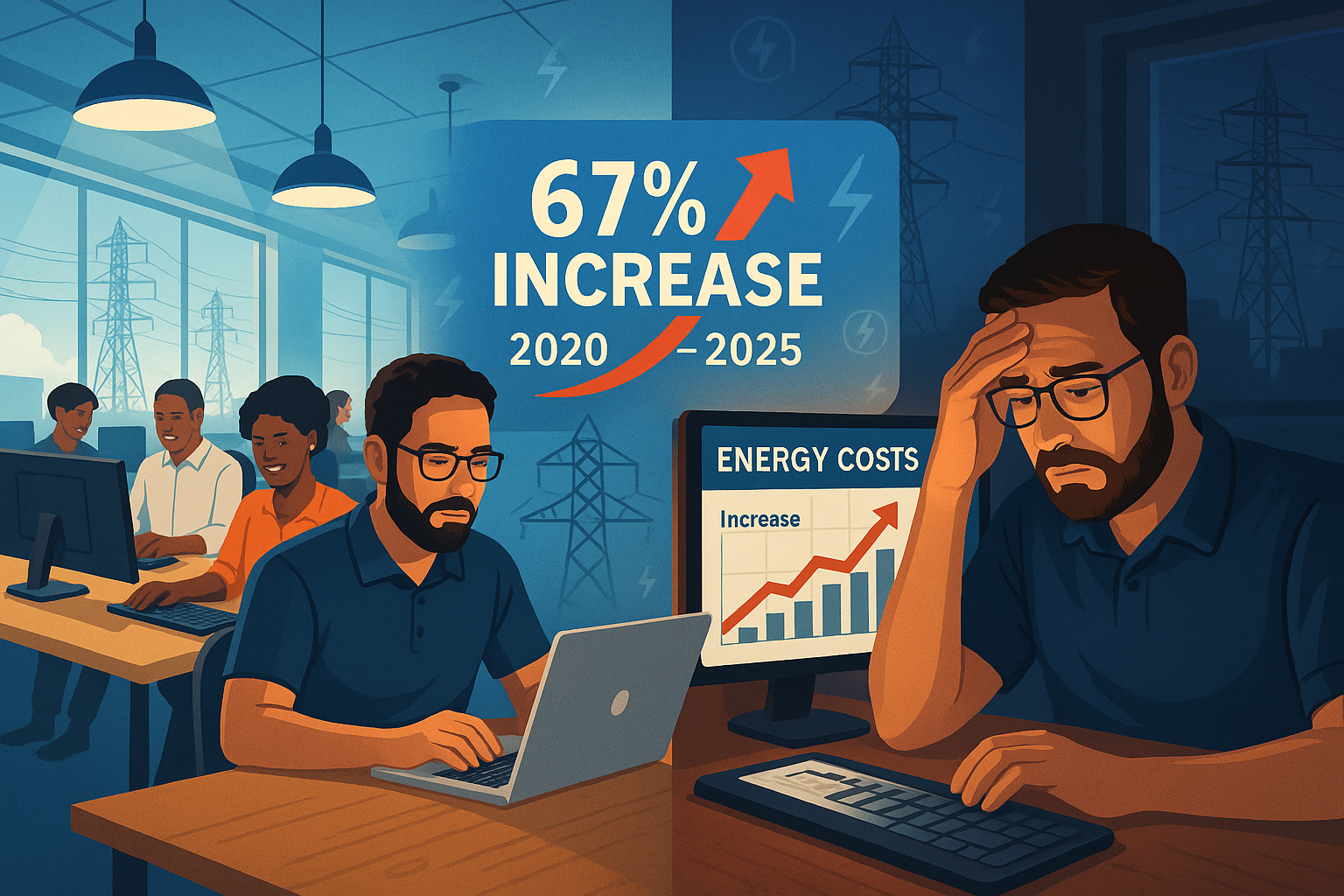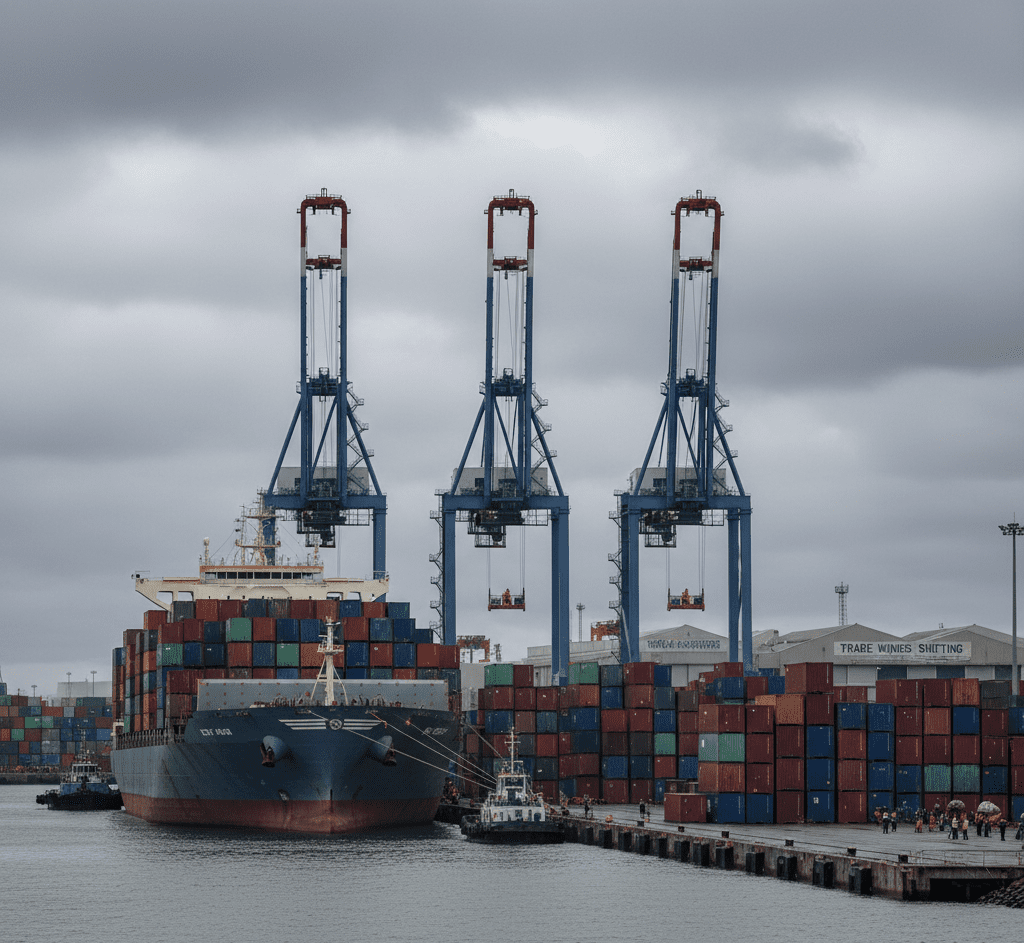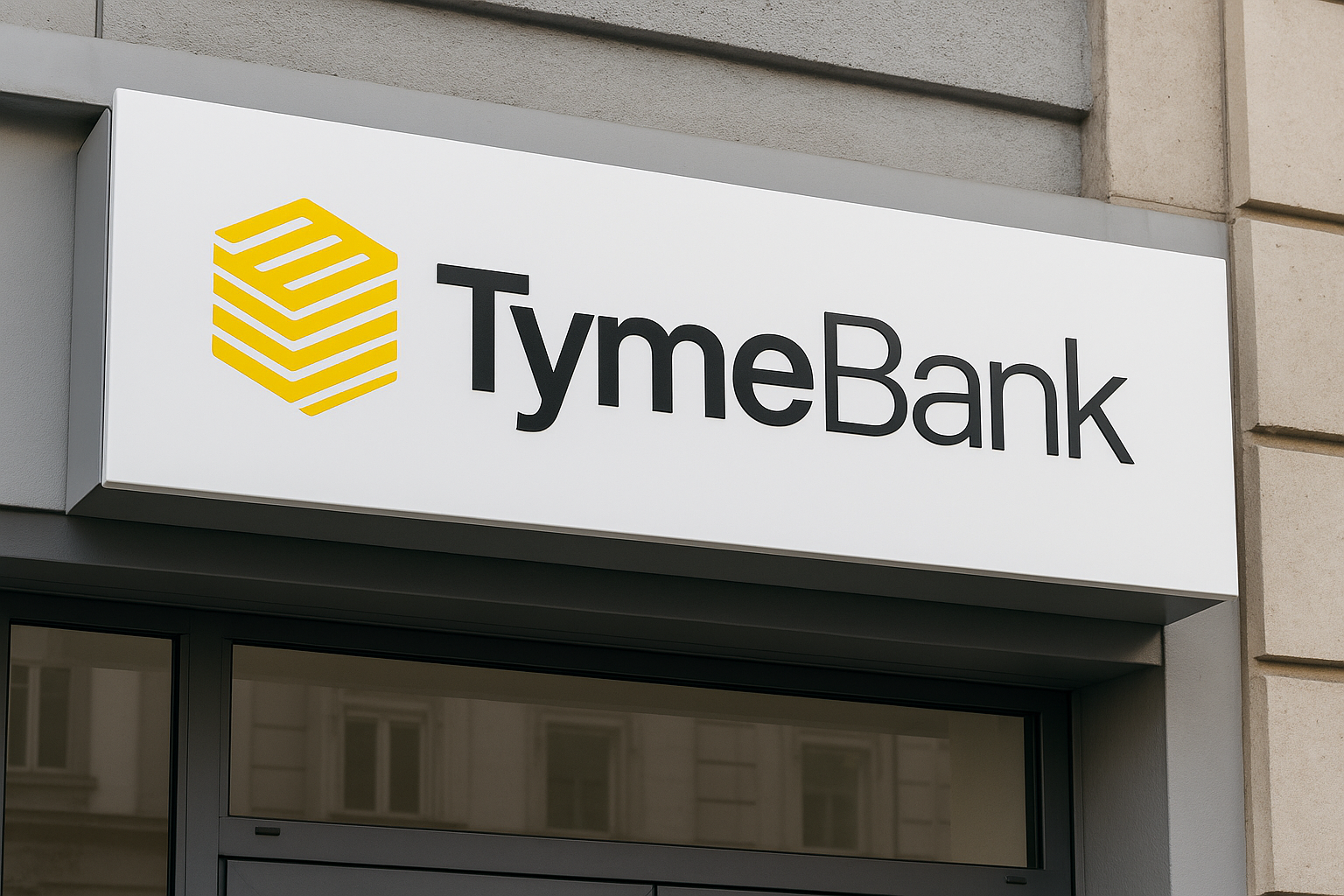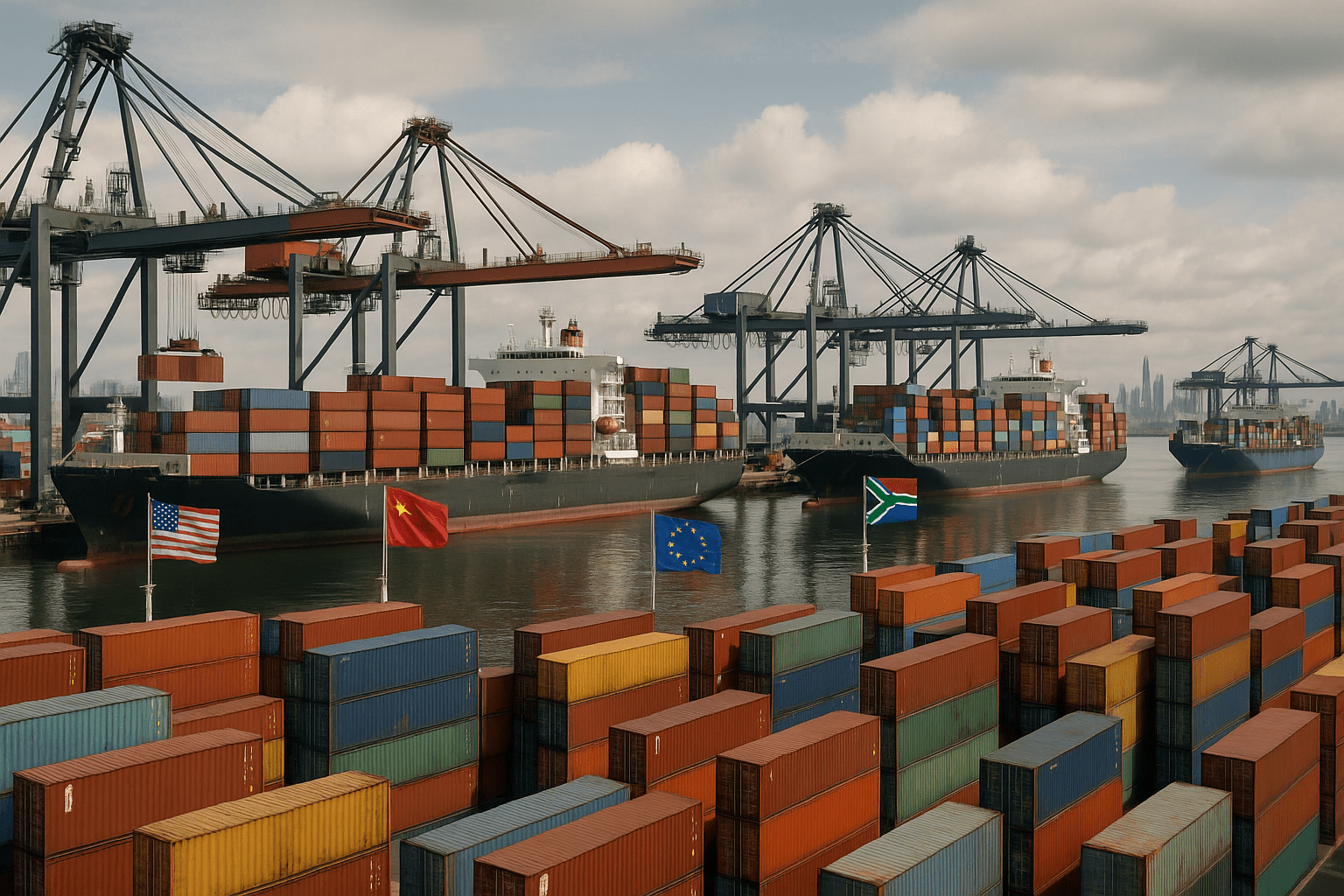Eskom Price Increases: 67% Rise Since 2020 Hits SA Businesses Hard

Eskom Price Increases: 67% Rise Since 2020 Hits SA Businesses Hard
South African businesses are buckling under the weight of Eskom’s price increases. Since 2020, electricity tariffs have jumped by 67% – a figure that dwarfs the country’s inflation rate and is forcing companies to make tough choices about their future.
What started as manageable utility increases has become an existential threat for many businesses. The numbers are stark: a company paying R10,000 for electricity in 2020 now faces a monthly bill of R16,700. This represents an additional R80,400 annually that must be absorbed or passed on to consumers.
The impact extends beyond simple cost increases. Business owners across the country report sleepless nights as they grapple with budget revisions, staff cuts, and difficult conversations with investors. Some have already closed their doors, unable to absorb the mounting pressure on their margins.
The Damage Done
Eskom hasn’t held back on price hikes over the past five years:
- 2021: 15.63% increase
- 2022: 9.61% increase
- 2023: 18.7% increase (the worst year yet)
- 2024: 12.7% increase
- 2025: 12.74% approved for the coming financial year
These aren’t small adjustments – they’re compounding annually. While South Africa’s general inflation averaged around 4.4% during this period, electricity costs have grown at nearly four times that rate.
The cumulative effect is staggering. A restaurant that spent R15,000 monthly on electricity in 2020 now pays R25,050 – an additional R10,050 every month. For a retail chain operating 10 stores, this translates to an extra R100,500 monthly or R1.2 million annually in electricity costs alone.
Manufacturing companies face even steeper challenges. A medium-sized factory consuming 200,000 kWh monthly has seen costs rise from approximately R260,000 in 2020 to R434,200 today – an additional R174,200 monthly burden that directly impacts competitiveness in export markets.
Why the Explosive Growth?
The root of the problem is Eskom’s financial mess. The utility is drowning in R400 billion worth of debt and desperately needs cash to keep the lights on. Their aging coal plants, some decades old, are expensive to maintain and increasingly unreliable.
The situation has been decades in the making. Eskom’s infrastructure investment dried up during the 2000s, leaving the country with insufficient generation capacity. When demand outstripped supply, the utility was forced into expensive emergency procurement and costly maintenance cycles.
Load-shedding has become a regular feature of South African life, but it’s also a symptom of deeper structural problems. The utility’s debt service costs now consume approximately 40% of its revenue, leaving insufficient funds for maintenance and new capacity.
The National Energy Regulator (NERSA) keeps approving large portions of Eskom’s tariff applications, caught between protecting consumers and preventing the power system from collapsing entirely. Each approval brings temporary relief to Eskom’s finances but pushes the burden onto businesses and households.
Small Businesses Hit Hardest
Small and medium enterprises are taking the worst of it. Unlike big corporations with energy management teams, most SMEs don’t have the resources to implement sophisticated cost-cutting strategies.
Take a typical manufacturing SME using 50,000 kWh monthly. Their electricity bill has jumped from about R65,000 in 2020 to R108,550 today – an extra R43,550 every month that has to come from somewhere.
Manufacturing businesses report electricity now eats up 15-25% of their operational costs, compared to 8-12% in 2020. That’s forcing difficult decisions about production, jobs, and investment.
The situation is particularly acute for energy-intensive industries. Metallurgy, mining, and chemical manufacturing companies find themselves at a severe disadvantage compared to international competitors. Some have already relocated operations to countries with more stable and affordable energy supplies.
Service industries aren’t immune either. Hotels, restaurants, and retail operations face mounting pressure as air conditioning, lighting, and refrigeration costs soar. Many have been forced to reduce operating hours or pass costs directly to consumers, further dampening economic activity.
More Increases Coming
Despite business protests, NERSA has approved further hikes:
- 2026: 5.4% increase
- 2027: 6.2% increase
While these are smaller than recent double-digit jumps, they still outpace expected inflation. Eskom originally wanted a 36.1% increase from April 2025, but even the “compromise” 12.74% is devastating for business planning.
How Businesses Are Responding
Companies are scrambling to adapt. Energy efficiency investments – LED lighting, efficient motors, smart power systems – are becoming standard. The upfront costs are significant, but they typically cut electricity consumption by 15-30%.
Solar installations are increasingly popular for commercial use, with payback periods of 3-5 years now common. Battery storage helps during load-shedding and provides additional savings.
Some businesses are getting creative with load management, shifting high-consumption activities to off-peak periods when rates are lower.
The more progressive companies are viewing this crisis as an opportunity for innovation. A Cape Town-based textile manufacturer recently invested R2.5 million in solar panels and energy-efficient machinery, cutting their electricity bill by 40% while improving production efficiency.
Technology companies are developing sophisticated energy management systems that automatically adjust power consumption based on real-time pricing. These systems can reduce electricity costs by 20-35% for businesses with flexible operations.
However, not all companies can afford these solutions. Many SMEs operate on thin margins and lack access to capital for major efficiency investments. This is creating a two-tier system where well-capitalized companies gain competitive advantages while smaller players struggle to survive.
Government Playing Catch-Up
The government has finally started addressing the crisis. They’ve removed licensing requirements for private generation projects under 100MW and are fast-tracking renewable energy programs.
Various departments offer support measures, including tax incentives for renewable energy investments and accelerated depreciation for energy-efficient equipment.
The Department of Trade, Industry and Competition has launched a R1 billion energy efficiency support scheme, providing grants and low-interest loans for businesses investing in energy-saving technologies. However, demand far exceeds available funding, with applications worth R8 billion submitted in the first six months.
National Treasury has also introduced tax incentives allowing businesses to deduct 125% of renewable energy investments from their taxable income, making solar and wind projects more attractive to corporate investors.
Despite these efforts, many business leaders argue that government intervention is too little, too late. The regulatory environment remains complex, and grid connection procedures for private generation projects continue to face bureaucratic delays.
The New Reality
The harsh truth is that Eskom’s price increases will continue outpacing inflation for years to come. The 67% increase since 2020 is just the beginning of a fundamental shift in South Africa’s energy landscape.
Businesses that adapt quickly – through efficiency improvements, alternative energy, and operational changes – will survive. Those that don’t may not.
Electricity costs are no longer just another line item in the budget. They’re now a strategic consideration as important as labor costs or raw materials. The companies that treat this crisis as an opportunity for innovation and efficiency will be the ones still standing when the dust settles.
The energy transition is creating winners and losers. Companies that can afford to invest in renewable energy and efficiency measures are gaining competitive advantages, while those trapped in the old system face mounting pressure.
This fundamental restructuring of the energy sector will likely accelerate over the next decade. Businesses that position themselves early in this transition – investing in clean energy, energy storage, and efficient operations – will emerge stronger and more competitive.
The 67% increase represents more than just higher costs; it’s a signal that the old energy paradigm is breaking down. The businesses that recognize this shift and adapt accordingly will write the next chapter of South Africa’s economic story.




